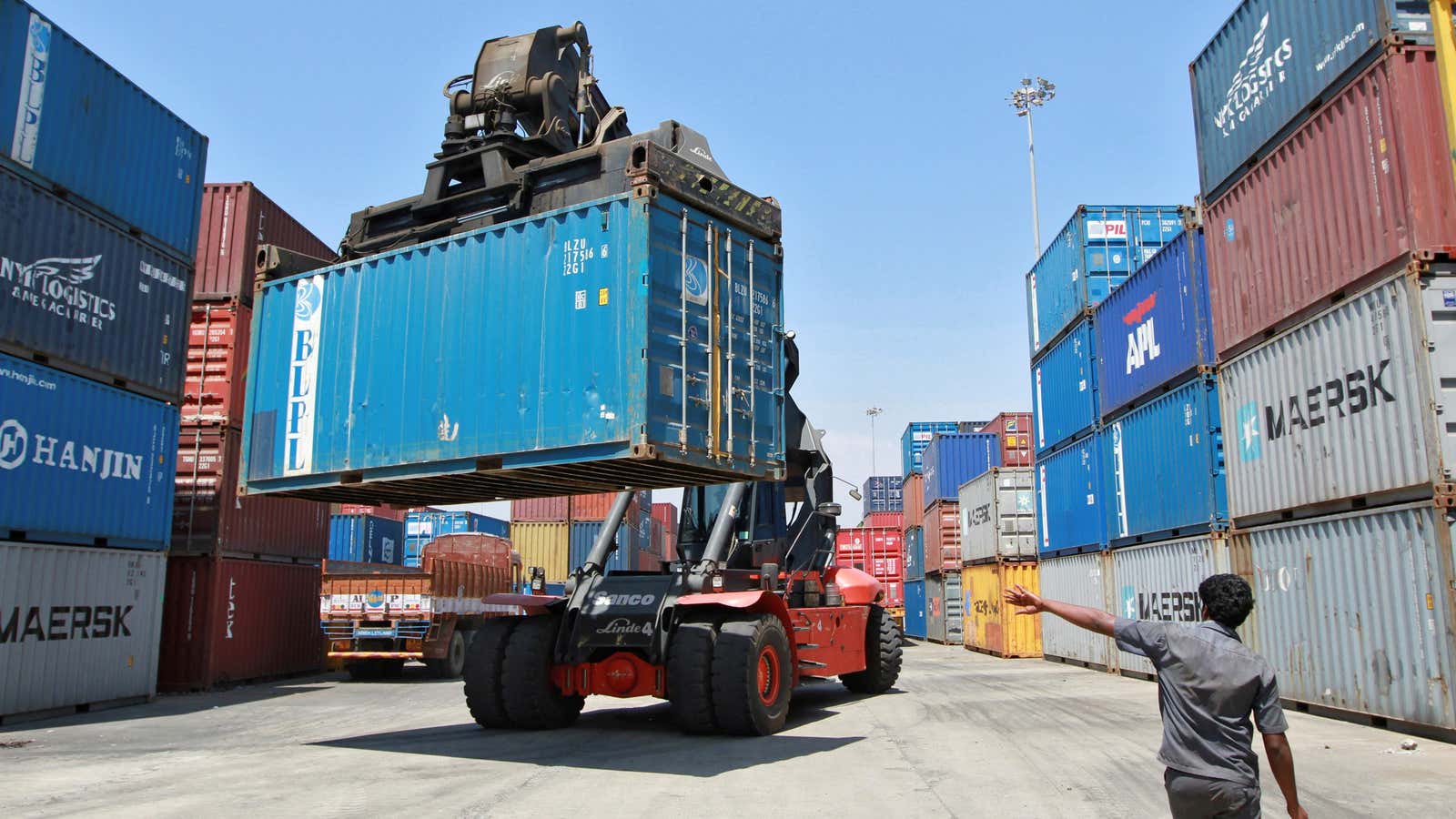India became a net exporter in June for the first time in 18 years, with exports of goods and services outweighing imports by $800 million. The Indian government was quick to celebrate its trade surplus, with union minister Piyush Goyal attributing it to prime minister Narendra Modi’s call for Aatma Nirbhar Bharat (self-sufficient India). But economists and experts believe such rejoicing is misguided.
The government’s chest thumping is nothing new, but a deeper look at the numbers exposes the reality of India’s trade and current account balance. The devil, as always, is in the details.
The surplus has been generated not by surging exports, but by weak domestic consumption.
“Imports have fallen across the board, which is more a reflection of the sharp fall in demand this quarter (April-June), although it includes the periods of nationwide and regional lockdowns,” Mumbai-based economist Sreejith Balasubramanian told Quartz. A report from analysts at Edelweiss, also in Mumbai, highlights some of the key numbers: “Non-oil imports are down 45% year-on-year. Electronic goods, one of the key imports from China, are down 34%.”
According to Balasubramanian, the headline trade surplus in June might look good on paper, but it’s actually a worrying sign of the fall in demand, which warrants a close examination of trade in the coming months.
The low global price of oil is also helping India’s trade surplus. It is a major importer of crude and is spending fewer dollars. Reflecting this, the oil trade deficit stands at $8.3 billion in the first quarter of the current financial year, compared to $23.3 billion in the same quarter last year.
For similar reasons, India also posted a current account surplus in the March quarter. (The current account encompasses trade of goods and services, as well as investment income and private money transfers.) Economists believe that even before a stringent Covid-19 led lockdown crippled the economy, India was facing a sharp slowdown. Although exports had fallen to a nine-quarter low, weakness in consumption and a strong inflow of investment income and remittances still helped India to achieve a surplus.
